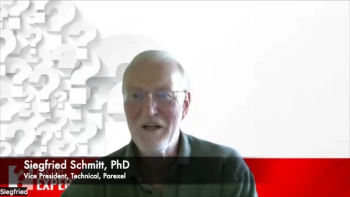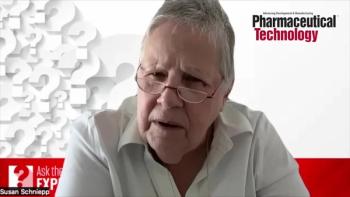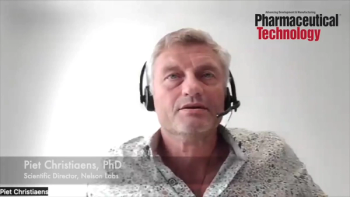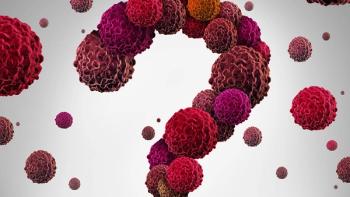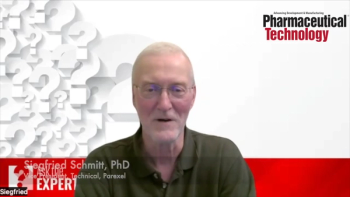
Viral Clearance & Viral Safety: Industry Trends & Key Events
With regulators embracing next-generation sequencing, how will the ICH Q5A(R2) guidelines reshape viral safety strategies for gene and cell therapies?
BIOPHARM INTERNATIONAL®: Sandra, what major topics in viral clearance are dominating the industry at the moment, and what challenges does the field have to face moving forward?
SANDRA ZUCCHET, MSc: Updates to the ICH Q5A guidelines [ICH Q5A(R2)]1 have had a direct impact on viral clearance strategies. One of the major developments is the shift towards continuous manufacturing. We have well established viral clearance strategies for traditional batch approaches, but adapting these to continuous manufacturing is a challenge. For example, batch processing typically involves well-characterized and consistent protein and impurity concentrations.
Continuous manufacturing can lead to fluctuations in these concentrations, including transient peaks. It is essential to understand how such variations influence the viral clearance capacity of individual process steps throughout a continuous process. A key challenge for manufacturers will be designing appropriate viral clearance studies—determining whether batch-mode studies can still be used, and if so, how to justify the selected parameters.
Additionally, understanding how these variations affect the viral clearance capability of each process step will be critical. Advanced therapy medicinal products are also an important area of focus. Newer modalities such as cell therapies, gene therapies, and the assurance of virus safety for these product types is a hot topic. Traditional viral clearance strategies cannot be applied to cell therapies. Viral vectors used in gene therapies also pose challenges in terms of viral safety.
Fortunately, the ICH Q5A(R2) guidelines address advanced therapies.1 It’s good that we have a regulatory framework to follow. However, challenges designing viral clearance studies for these therapies still exist, and we may be limited in process steps capable of inactivating or removing viruses.
We are facing challenges with model virus selection due to the wide range of production systems. Additionally, there is no clear regulatory framework for IND and CTA filings for these newer product types. While the ICH Q5A(R2) guidelines have brought them into scope,1 guidance primarily applies to marketing applications. The challenge now is to determine the regulatory expectations for early phase viral clearance studies in support of clinical trials. A third major topic is the use of prior knowledge. With the revised ICH Q5A guidelines, there is now the possibility to leverage prior knowledge and potentially omit product-specific viral clearance studies—if manufacturers can demonstrate consistent performance of processes.1
The challenge will be in determining how to apply prior knowledge to build a robust manufacturer-specific database, and in understanding how much data is sufficient to support a general claim without conducting a product-specific viral clearance study. Manufacturers will need to keep up with evolving regulatory requirements, especially as agencies continue to support and embrace new technologies. This is important to ensure they meet regulatory requirements while minimizing the risk of their filings being rejected.
BIOPHARM INTERNATIONAL®: Do you already see trends in changing viral clearance study designs/scopes based on the ICH Q5A(R2) guidance? If so, what are the main changes you are observing and where do we still see reservation?
SANDRA ZUCCHET, MSc: Although the ICH Q5A(R2) guidance was signed off by the ICH in November 2023,1 it is still in the process of being implemented by different regulatory bodies. As a result, there is no clear-cut timeline for changing viral clearance strategies. However, we [Charles River] reviewed changes that have occurred in viral clearance study designs over the last 2 years. In regard to protein A chromatography and the use of aged resin runs, the revised ICH Q5A guidelines allow for the omission of used resin runs,1 since there is over 20 years of prior knowledge demonstrating that resin capacity is not impacted.
Surprisingly, we did not see a shift in the percentage of projects using aged resin versus only using fresh resin, but we did see regional differences. In Europe and North America, for example, we noted a decline in projects using aged resins. In Asia, however, the number of projects testing used resin for the protein A step was maintained. So, I think we still see regional differences.
For the nanofiltration step, manufacturers are now permitted to transfer the log reduction factor determined for the smallest model virus—typically parvovirus—to larger viruses because of the principle of size-based exclusion.1 Once a filter has been shown to retain a small virus, it can be reasonably assumed to retain larger viruses as well. Here, we see a shift away from testing MuLV (murine leukemia virus)—a relatively large virus—in viral clearance studies, toward testing only MVM (minute virus of mice), the parvovirus, for the nanofiltration step.
In general, I think manufacturers tend to be more conservative when it comes to changing well-established viral clearance strategies. Many prefer to stick with proven approaches rather than adopting new strategies too quickly. We’ve also observed regional differences in this regard. It’s important to keep in mind that manufacturers often operate across multiple regions, where regulatory expectations can vary significantly. That said, I believe we just need to give it another 2 or 3 years to see how this evolves.
BIOPHARM INTERNATIONAL®: Sandra, how has Charles River’s Virus Safety & Viral Clearance event evolved over the years? What can we expect from the Virus Safety & Viral Clearance Summit in Cologne [Germany] this year?
SANDRA ZUCCHET, MSc: The first viral clearance summit was hosted by Charles River in the US in 2016. The summit was necessary because, at the time, very few conferences addressed viral clearance topics. As the event grew, we began introducing virus safety topics and invited various stakeholders, including regulators from the FDA and EMA. This was very valuable to our attendees, and we realized that people were waiting for an event like this to be hosted in Europe. And so, we hosted our first European viral clearance summit in 2023 in Cologne, Germany. I’m very happy to announce that the event will return there this year, in June. This year, the event includes a full day dedicated to virus safety. Here, we’ll talk a lot about next-generation sequencing (NGS).
We’ll also host a full day dedicated to viral clearance that will include great discussions about current hot topics in the industry. This day will include presentations on the use of prior knowledge and the application of novel technologies, including the first co-spiking studies and the use of retrovirus-like particles as noninfectious surrogates. Our keynote speaker, joining us from the Paul-Ehrlich-Institut, will present on the revised ICH Q5A guidelines. These 2 days will be very intense. Afterwards, Charles River will offer attendees the opportunity to tour our facilities in Erkrath and Cologne. This is a fantastic opportunity and I’m looking forward to reconnecting with familiar faces as well as meeting new ones at the Virus Safety & Viral Clearance Summit.
BIOPHARM INTERNATIONAL®: Dr. Cherif Louazani, I understand you’ll be presenting at this year’s summit. Could you please introduce yourself and share a bit about your role in viral safety? Also, what major milestones in viral safety testing have occurred over the past 5 years?
AMINA CHERIF LOUAZANI, PharmD, PhD: As a viral safety and regulatory affairs manager at PathoQuest, I’m in charge of overseeing the use of our viral safety products with NGS technology to evaluate viral safety status of biologics. We are a CRO specialized in providing quality control (QC) testing for biologics through NGS. Within this space, I support customers who are changing their QC strategies to implement NGS, either as a replacement or as a supplement to other assays used for viral safety.
This is all important, as we’ve seen a transition of NGS from an investigative tool for evaluating the viral safety of certain products to being recognized and accepted by both regulators and the industry as an actual alternative in viral safety testing.
BIOPHARM INTERNATIONAL®: What are the regulatory and industry changes impacting viral safety testing?
AMINA CHERIF LOUAZANI, PharmD, PhD: From a regulatory standpoint, the implementation and adoption by the regulators of the ICH Q5A(R2) guidance has been a defining moment. In this revised guideline, we have more clarity on viral safety testing and proper evaluation of novel product types.1 As Sandra mentioned, we have new bioprocessing technologies that can be implemented that require faster and more robust adventitious virus detection very quickly.
New modalities present new challenges, from the viral clearance perspective. This calls for stronger securitization and more robust viral safety testing strategies for manufacturers. The revised ICH Q5A guidance recommends the use of broad molecular technologies, like NGS, as tools for adventitious virus detection, provided they are properly validated.1 We’ve also seen greater flexibility from authorities like the FDA and EMA in allowing platform approaches, enabling the application of prior knowledge in viral safety testing.
In terms of harmonization efforts, especially in the past year, we’ve seen significant progress with the publication of the draft European Pharmacopeia Chapter 2.6.41. This chapter clearly outlines the use of NGS for virus detection, providing guidance on how to properly validate these methods. It also defines performance criteria and offers alignment on designing and validating these technologies.2
In parallel, from an industry perspective, we’ve seen a strong push to implement these new technologies. This was highlighted by the European Federation of Pharmaceutical Industries and Associations, which, in its position paper, advocates for the adoption of NGS as a tool for detecting adventitious viruses.2 This marks the beginning of a new era in viral safety, where we will have the ability to deliver more robust and secure products for patients.
BIOPHARM INTERNATIONAL®: Dr. Cherif Louazani, what topics are you presenting at the summit, and why are these so important to you?
AMINA CHERIF LOUAZANI, PharmD, PhD: I’ll be presenting the regulatory acceptance of NGS for adventitious virus testing, with a particular focus on our experience over the past few years, with the implementation of ICH Q5A(R2). The presentation will highlight the application of NGS across various product modalities, the types of products we’ve tested for our customers, and how we’re supporting different replacement strategies using NGS.
This is an important topic for me, not only from a scientific perspective—it’s exciting to see how we are using more innovative technologies that we know are more robust in viral safety testing—but in the context of new, highly-personalized therapies, in the context of more complex processes that need better coverage in terms of virus detection, implementing NGS is a way to safeguard, from my perspective, patient safety. Broadening the implementation of this approach will help accelerate access to innovative therapies that are safer and offer greater reassurance for patients.
I would also add that we’re truly at a turning point—validated technologies are now in place, and regulatory frameworks are becoming more aligned than ever before. For those of us who are working in this space, this is an opportunity to modernize testing approaches and provide therapies with better safety assurance.
Visit
REFERENCES
1. International Council for Harmonisation of Technical Requirements for Pharmaceuticals for Human Use (ICH). ICH Q5A(R2): Viral Safety Evaluation of Biotechnology Products Derived from Cell Lines of Human or Animal Origin. Published November 1, 2023. Accessed April 22, 2025.
2. European Federation of Pharmaceutical Industries and Associations (EFPIA). EFPIA Comments on European Pharmacopoeia Chapter 2.6.41: High-Throughput Sequencing for the Detection of Viral Extraneous Agents. Published June 2024. Accessed April 22, 2025.
Newsletter
Stay at the forefront of biopharmaceutical innovation—subscribe to BioPharm International for expert insights on drug development, manufacturing, compliance, and more.

